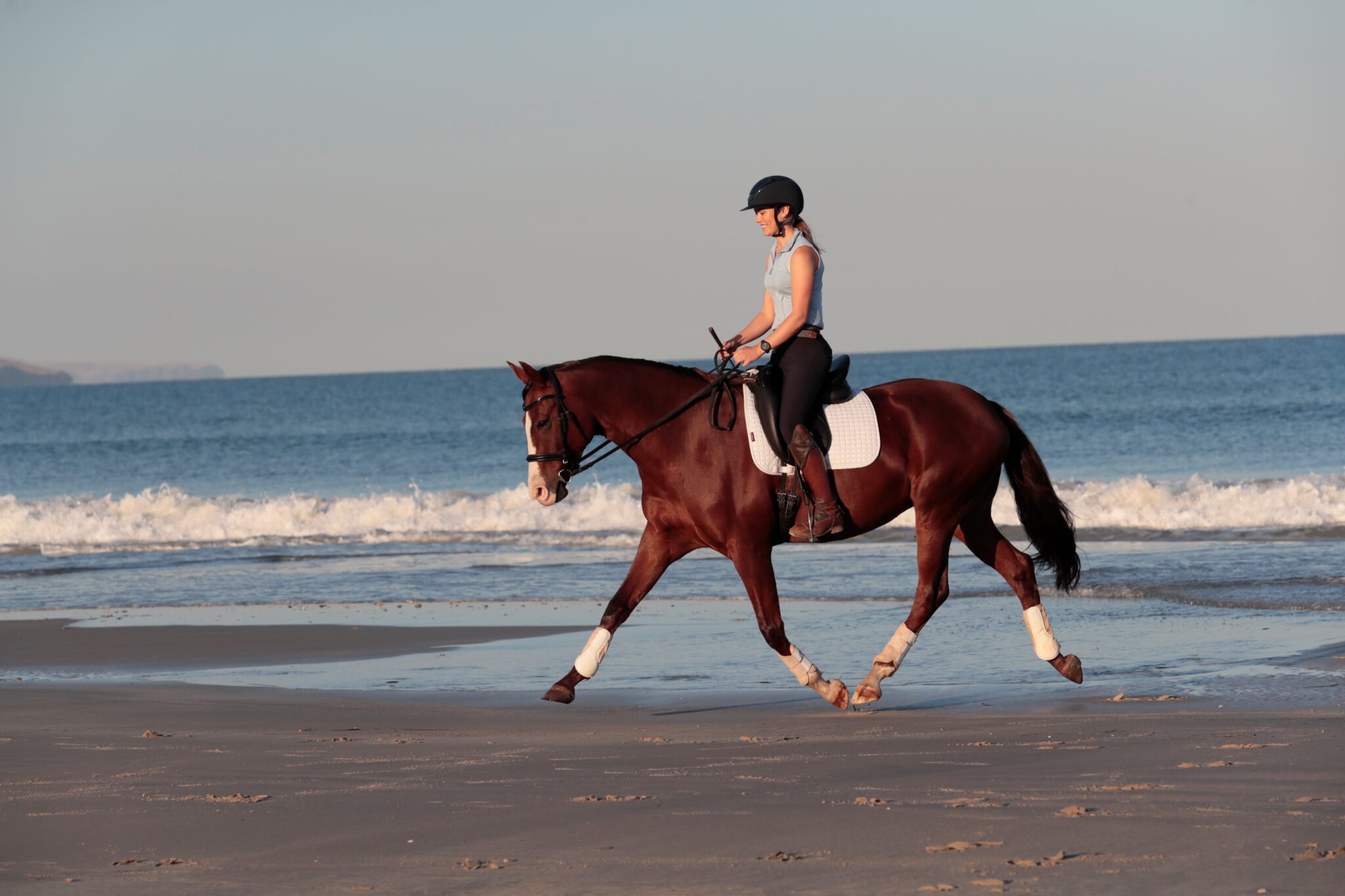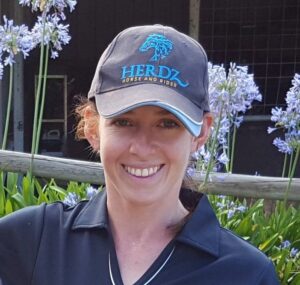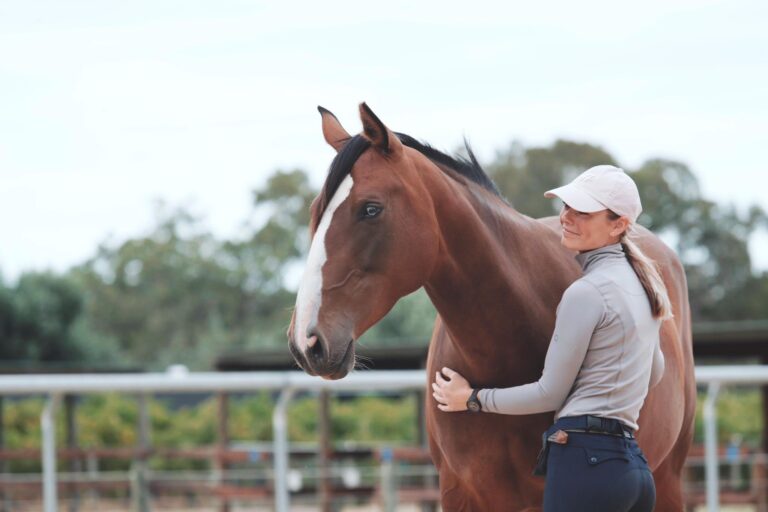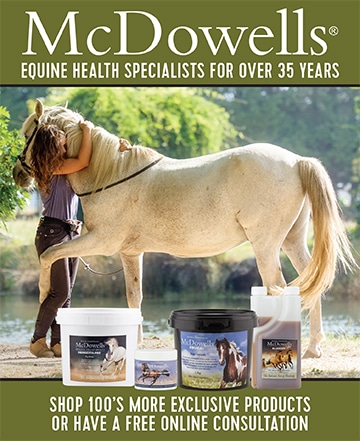Our resident writer Enya takes some time out to chat with Amalia Dempsey on how she incorporates natural horsemanship into her training and why building a strong partnership is so important.
Most of us start our riding journey because of our love of horses and desire to have a great connection and communication with them. But training roadblocks or challenges can often thwart our intentions and leave us frustrated and defeated.
Amalia Dempsey is a natural horsemanship coach who has spent years helping riders have a confident and harmonious training journey with their horse. She initially had a successful competitive dressage and eventing career, before her two yearlings led her to look more broadly at her approach to training horses and she subsequently discovered natural horsemanship. After 6 years of intensive studying and practice, she has refined her own method of developing the best possible partnership with your horse.
Here she shares her 10 philosophies that she brings to every horse she works with, and that she teaches hers students.
1. Attitude is everything
We all know horses can feel your energy when you’re riding, but they can also feel it when you’re on the ground. So if you are approaching your horse and you’re thinking about your bad day, your horse is going to pick up on your short fuse.
To approach your horse with a positive attitude, remember why you’re doing this in the first place – usually for the fun of it. So next time you go to ride or train your horse, make a conscious choice to leave your bad day behind you and enjoy it.

2. Be aware of your horse’s body language
Many people make the mistake of not realising how their body language is influencing their horse. Horses communicate with each other with body language, but so many of us are holding tension in our bodies that we are unintentionally communicating to our horse.
By putting some effort into being aware of your body language, a whole new channel of communication opens up with your horse.
3. Relationships are mutually beneficial
So often we want to go the competitions, we want to win the blue ribbon and do the advanced work, but our horses don’t think that way. Neither do they think ‘mum bought me a new rug and pays my vet bills, so I should be thankful’.
We need to understand what our horses actually value in order to get them onside. The first thing they value is safety, so we need to show them that we can keep them safe, and much of this work can be done through groundwork.

4. Think from your horse’s perspective
Building on point 3, it’s important to understand your horse as a species. Knowing what motivates them and how they learn will make your training journey a far smoother one.
5. Build a language of clear communication
Horses aren’t born with buttons – they don’t know where to lead or stay out of your space just as much as they don’t know a canter aid. And while we are prepared to spend hours perfecting a walk/trot transition or a flying change, we expect a horse to load onto a dark and scary trailer for the first time in 15 minutes.
If we bring the same amount of dedication we have to training our horses under saddle to building clear communication on the ground, they going to have a much better time.
6. Turn negatives into positives
Often we have to do things with our horse that are negative for them. As a general rule, horses don’t want to be worked, get on a float or have initially a bit in their mouth.
So try to turn negative experiences into positive ones wherever possible.
Take worming for example. If you give your horse molasses water in a syringe for several days before and after worming, your horse only gets one negative experience among a handful of positive ones.
7. Don’t proceed without relaxation
Have you ever tried to learn something new when you’re anxious or tense? It’s almost impossible. Unsurprisingly, horses are the same.
It’s important to have a toolkit to help our horses relax in situations where they will get anxious. If not and you just get on with whatever you had planned to teach them, you’re going to have a very unproductive session.
8. Consistency equals trust
Horses like predictability. If you are consistent in your body language, cues and pressure – both under saddle and on the ground – you will become a source of safety and comfort for your horse. If you’re inconsistent, your horse will become anxious about what’s going to happen next.
This consistency can be a source of comfort in itself. If you take them to a new environment and then ask them to do things that are familiar to them, that one bit of consistency will give them confidence.
9. Be a good leader
While you need to be clear on what you expect and set boundaries, it’s important to do it in a way that’s encouraging rather than domineering. A horse/human relationship is like no other but the closest analogy is that of a parent and child. While you love them, you set healthy boundaries so that they stay safe and grow up to be a good person. Training a horse is very similar.
10. Be playful and fun
Bringing a fun energy to your training makes the experience much more positive, and will help you get results more quickly.
Putting it into practice
These 10 points are important to keep in mind for any work with your horse. If you want to learn more about applying them, you can listen to Amalia’s podcast or check out the Horsemanship Fundamentals Academy.
About Enya

Enya is an EA Level 1 coach and 1*/2* eventer who has been riding for 20 years and coaching for 10 of them. Her favourite thing about working with horses is that we never stops learning, and loves tapping into the knowledge of specialist experts to enhance the skills of both herself and her students.


